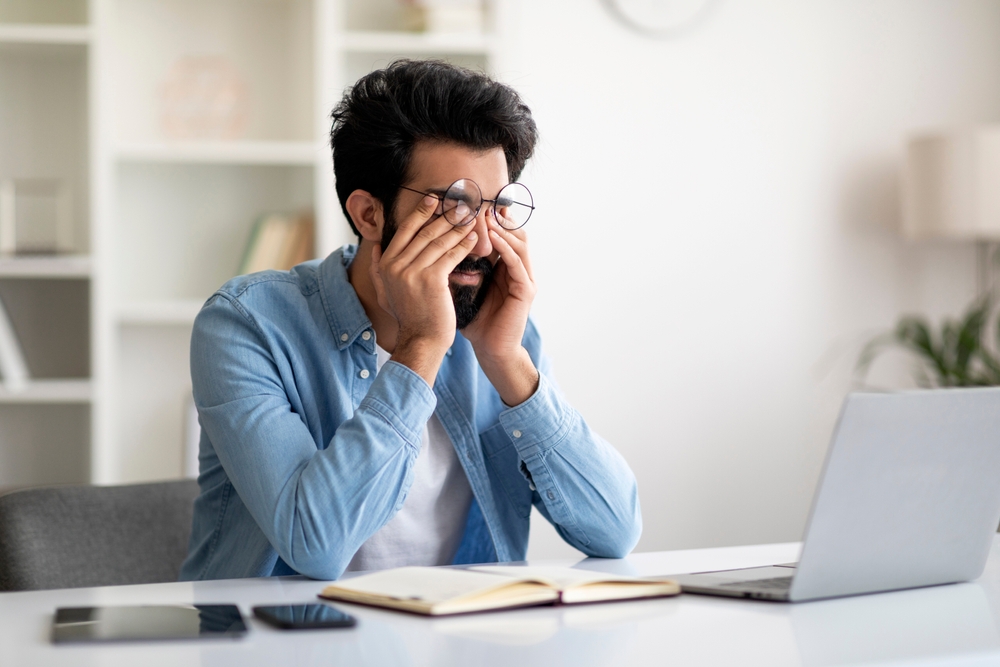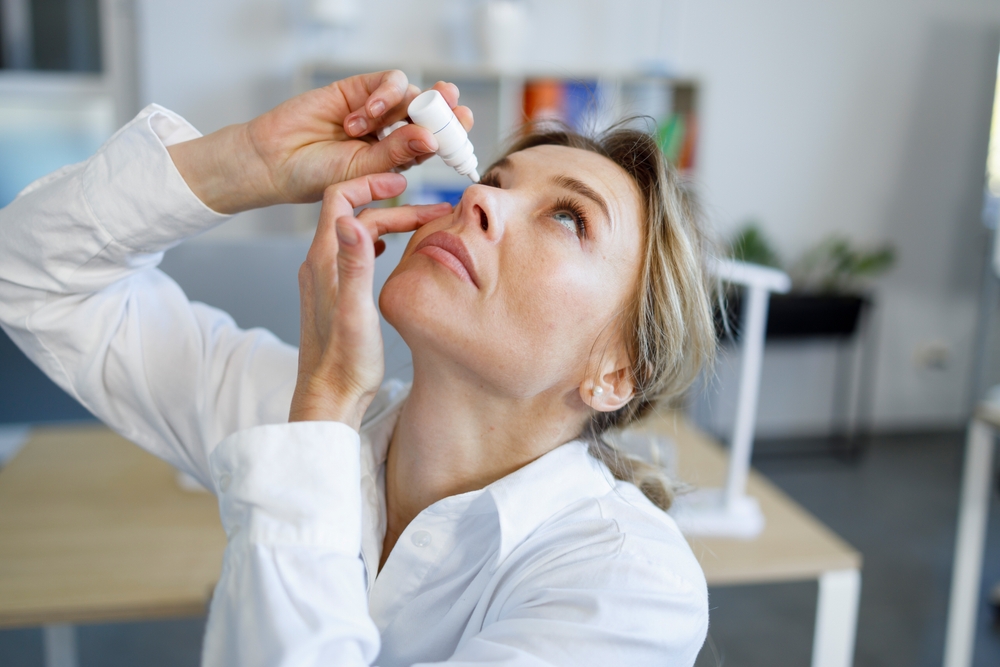Can You Treat Dry Eye at Home?
Have you been dealing with dry, irritated eyes that won’t go away? You could have dry eye, a common condition that can cause discomfort and disrupt your daily life.
Luckily, depending on the cause and severity of your dry eye, you may be able to treat it with some simple lifestyle changes. Keep reading to learn more about whether you can treat dry eye at home and when it’s time to seek professional care.
What is Dry Eye?
Dry eye, also called dry eye syndrome, is an eye condition that occurs when your tears lack oil, mucus, or water. These are all essential components of a healthy tear film.
Your tear film keeps your eyes properly lubricated and helps protect them from irritants, such as allergens and debris. When there is not enough oil, mucus, or water in your tear film, your eyes may not be able to produce enough tears, or the tears produced may not be able to keep your eyes moist.
What are the Symptoms of Dry Eye?
Dry, irritated eyes are often a telltale symptom of dry eye. You may also experience symptoms like:

- Excessive eye watering
- Redness
- Mucus in or around your eyes
- Difficulty wearing contacts
- Eye fatigue
- Light sensitivity
- Itchiness, stinging, or burning
- A sensation that something is in your eye
- Blurry vision
However, these symptoms are not exclusive to dry eye and may indicate other conditions, such as conjunctivitis. It’s essential to undergo a comprehensive eye exam with your ophthalmologist at Complete EyeCare West before attempting to treat your condition at home so that you can get the right level of care.
How is Dry Eye Treated?
If you’ve been diagnosed with dry eye, your eye doctor will discuss various treatment options with you depending on the cause and severity of your symptoms. For example, if your dry eye symptoms are caused or exacerbated by environmental irritants such as smoke, dust, or other allergens, your eye doctor will likely advise you to take extra precautions to prevent exposure, such as cleaning your house more frequently or wearing sunglasses when outside.
Other at-home treatments for dry eye include:
Dietary Changes

Staying hydrated by drinking more water can help maintain a healthy tear film. You can also promote hydration by eating foods like watermelon, cucumbers, and celery, and avoiding caffeine and alcohol consumption.
If your dry eye is caused by meibomian gland dysfunction (MGD), incorporating omega-3 fatty acids into your diet can help increase oil production to balance your tear film. You can get this essential nutrient from foods like fish, nuts, and seeds or by taking an omega-3 supplement.
However, be sure to consult with your doctor before starting any new supplements.
Limiting Screen Time
Looking at screens for prolonged periods of time can contribute to dry eye and eye strain. You can reduce the effects of this by setting limits around screen time or practicing the 20-20-20 rule.
This rule involves looking away from your screen every 20 minutes at an object 20 feet away for 20 seconds at a time. You can pair this with intentional blinking to ensure your eyes receive the lubrication they need.
Good Eyelid Hygiene
For patients with MGD, maintaining good eyelid hygiene is essential for preventing blockages in the meibomian glands and ensuring sufficient oil to support a healthy tear film. You can practice good eyelid hygiene by using a warm compress to release buildup in the meibomian glands and by avoiding the use of eye makeup.
If you wear makeup around your eyes, be extra diligent about removing it before going to sleep and ensuring that hard-to-reach spots are clean.
Artificial Tears
Over-the-counter artificial tears can provide quick relief from dry eye symptoms. You can ask your eye doctor about how often you should apply them and which type is right for you.
What If At-Home Treatments Don’t Relieve My Dry Eye?
While lifestyle changes and at-home treatments can help alleviate some patients’ dry eye symptoms, more severe cases may require professional treatment. Complete EyeCare West offers a comprehensive range of dry eye treatments, including:
Prescription Eye Drops

Restasis (Allergan) and Xiidra are prescription eye drops your eye doctor may recommend to help reduce inflammation in your eyes and promote lubrication. Steroid eye drops can also help reduce inflammation from dry eye.
Meibomian Gland Expression
Patients dealing with dry eye caused by MGD may benefit from meibomian gland expression. This in-office treatment involves your eye doctor applying targeted pressure to your eyelids to release blockages in the meibomian glands.
Intense Pulsed Light (IPL)
Intense pulsed light (IPL) is another effective treatment for dry eye caused by MGD that involves stimulating oil production in the meibomian glands using controlled pulses of light. IPL can also help reduce inflammation and the presence of bacteria on the eyelids.
Punctal Plugs
Punctal plugs are tiny devices that your eye doctor places in the tear drain of your lower eyelid. They can help slow the rate of tear drainage, keeping your eyes moist.
Have you been struggling with the frustrating symptoms of dry eye? Schedule an appointment at Complete EyeCare West in Columbus, OH, today to get a proper diagnosis and personalized treatment plan that can help you find relief.







